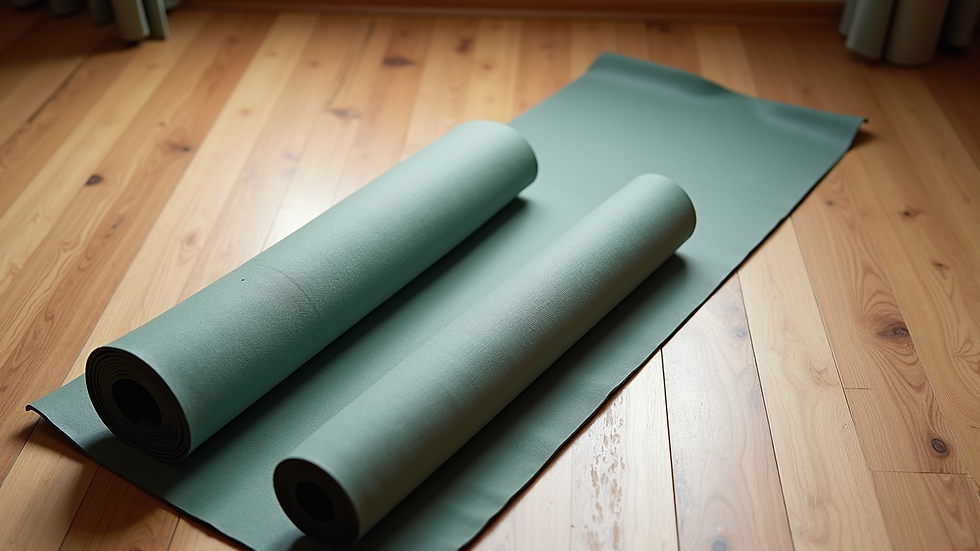The Benefits of Yoga for Mind and Body Healing
- Sep 15
- 4 min read
Yoga healing is a practice that has been embraced worldwide for its profound effects on both the mind and body. It combines physical postures, breathing techniques, and meditation to promote overall wellness. This ancient discipline offers a holistic approach to health, helping individuals manage stress, improve flexibility, and enhance mental clarity. Whether you are new to yoga or have been practicing for years, understanding its benefits can inspire you to incorporate it more deeply into your daily routine.
How Yoga Healing Enhances Physical Health
Yoga healing supports the body in numerous ways. Regular practice improves flexibility, strength, and balance, which are essential for maintaining physical health as we age. The gentle stretching and controlled movements help to release muscle tension and increase blood flow, which can reduce pain and stiffness.
For example, poses like Downward Dog and Warrior II strengthen the legs and core while opening the chest and shoulders. This can be particularly beneficial for people who spend long hours sitting or working at a desk. Additionally, yoga encourages mindful movement, which helps prevent injuries by promoting better posture and body awareness.
Incorporating yoga into your routine can also boost your immune system. The physical activity stimulates the lymphatic system, which plays a key role in fighting infections. Moreover, deep breathing exercises increase oxygen intake, supporting cellular health and energy levels.

The Role of Yoga Healing in Mental Wellbeing
Yoga healing is equally powerful for mental health. It helps reduce stress and anxiety by calming the nervous system. The practice encourages mindfulness, which means paying attention to the present moment without judgment. This can break the cycle of negative thoughts and promote emotional balance.
Breathing techniques, such as pranayama, are central to yoga healing. They regulate the breath, which directly influences the brain’s response to stress. Slow, deep breathing activates the parasympathetic nervous system, promoting relaxation and reducing cortisol levels.
Meditation and guided relaxation during yoga sessions also improve concentration and mental clarity. Over time, practitioners often notice enhanced mood, better sleep quality, and increased resilience to daily challenges.
For those interested in exploring these benefits further, summer healing yoga offers specialised sessions that combine yoga and breathwork to support mental and emotional healing.

Practical Tips for Starting Your Yoga Healing Journey
Starting yoga healing can feel overwhelming, but it doesn’t have to be complicated. Here are some practical tips to help you begin:
Choose the Right Style - There are many types of yoga, from gentle Hatha to more vigorous Vinyasa. Beginners may find restorative or gentle yoga classes more accessible.
Set Realistic Goals - Start with short sessions, such as 15-20 minutes, and gradually increase the duration as your comfort grows.
Create a Comfortable Space - Find a quiet, clutter-free area where you can practice regularly without distractions.
Use Props - Blocks, straps, and cushions can support your body and make poses more accessible.
Focus on Breath - Always coordinate your movements with your breath to deepen the healing effects.
Listen to Your Body - Avoid pushing into pain. Yoga healing is about gentle progress and self-care.
Consistency is key. Even a few minutes daily can lead to noticeable improvements in both physical and mental health.

Yoga Healing for Chronic Conditions and Pain Management
Yoga healing is increasingly recognised as a complementary therapy for managing chronic conditions such as arthritis, back pain, and fibromyalgia. The gentle movements and stretches help reduce inflammation and improve joint mobility.
For example, people with lower back pain often benefit from poses like Cat-Cow and Child’s Pose, which gently stretch and strengthen the spine. Yoga also encourages relaxation of tight muscles, which can alleviate discomfort.
In addition to physical benefits, yoga’s calming effects can reduce the perception of pain. Mindfulness meditation teaches individuals to observe pain without emotional reactivity, which can lessen suffering.
Healthcare professionals often recommend yoga as part of a holistic treatment plan. It is important to consult with a qualified instructor who can tailor practices to your specific needs and limitations.
Integrating Yoga Healing into Daily Life
To maximise the benefits of yoga healing, it’s helpful to integrate it into your daily routine beyond formal practice sessions. Here are some ways to do this:
Mindful Breathing Breaks: Take a few moments during the day to focus on your breath, especially during stressful situations.
Stretching at Work: Incorporate simple stretches to relieve tension from sitting or repetitive movements.
Evening Wind-Down: Use gentle yoga poses and meditation to prepare your body and mind for restful sleep.
Nature Connection: Practice yoga outdoors when possible to enhance relaxation and grounding.
Community Classes: Join local or online yoga groups to stay motivated and connected.
By making yoga healing a lifestyle choice, you can experience ongoing improvements in your overall wellbeing.
Yoga healing offers a powerful path to restoring balance in both mind and body. Its combination of physical movement, breath control, and mindfulness creates a comprehensive approach to health that is accessible to all. Whether you seek relief from pain, stress reduction, or simply a deeper connection with yourself, yoga healing can support your journey toward wellness. Embracing this practice with patience and consistency will unlock its full potential for transformation.



Comments